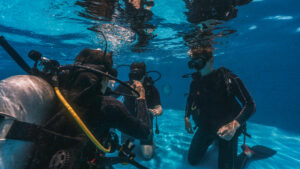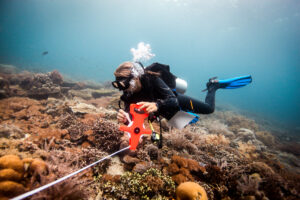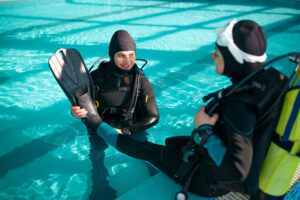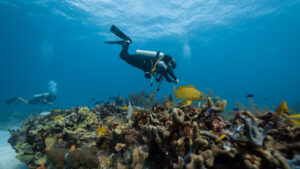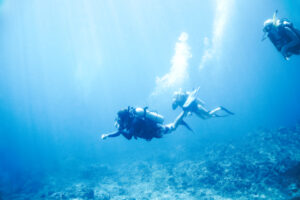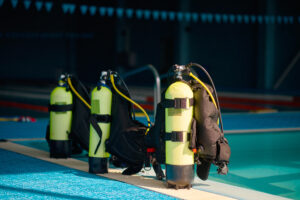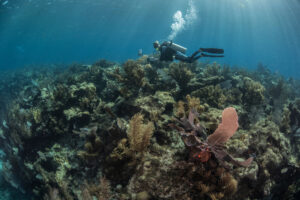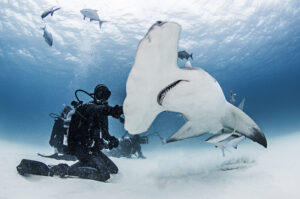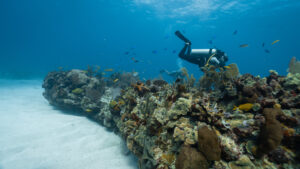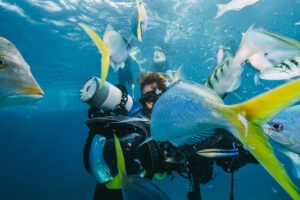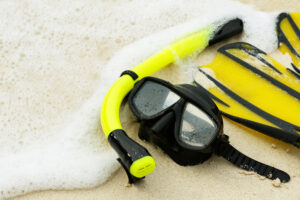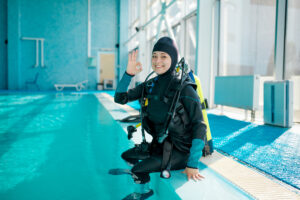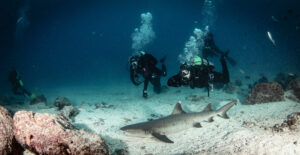Can you get Hypothermia when Scuba Diving?
Hypothermia is a medical condition characterized by a drop in the body’s core temperature below its normal range, which can occur during activities in cold environments, such as scuba diving. In the context of scuba diving, hypothermia poses significant risks to divers and can lead to serious complications, including incapacitation and even death. This comprehensive entry will discuss the causes, symptoms, prevention, and treatment of hypothermia in scuba diving, as well as its impact on dive safety.
Causes of Hypothermia in Scuba Diving
- Water temperature: Water conducts heat away from the body approximately 25 times faster than air, making it the primary cause of heat loss in scuba diving. Diving in cold water increases the risk of hypothermia, particularly if the diver is not wearing appropriate thermal protection.
- Duration and depth of dive: The longer a diver remains submerged and the deeper they dive, the greater the potential heat loss. Cold water at depth can exacerbate hypothermia, especially in divers with inadequate thermal protection.
- Inadequate thermal protection: Wearing insufficient or poorly fitting exposure suits, such as wetsuits or drysuits, can result in rapid heat loss and increased risk of hypothermia.
- Wind and air temperature: When exiting the water, cold air and wind can quickly cool a diver’s wet exposure suit, further accelerating heat loss and potentially leading to hypothermia.
- Individual factors: A diver’s age, body composition, fitness level, and overall health can influence their susceptibility to hypothermia. Older divers, those with a lower percentage of body fat, and individuals with pre-existing medical conditions may be at a higher risk.
Symptoms of Hypothermia in Scuba Diving
Hypothermia can be categorized into three stages, each with its distinct symptoms:
- Mild hypothermia (core body temperature 35-32°C or 95-89.6°F): Symptoms may include shivering, numbness, loss of dexterity, fatigue, mild confusion, and an increase in heart rate and respiratory rate. Divers may exhibit poor decision-making, reduced coordination, and slurred speech.
- Moderate hypothermia (core body temperature 32-28°C or 89.6-82.4°F): Shivering may cease, and symptoms may progress to severe confusion, lethargy, muscle stiffness, and a decline in heart rate and respiratory rate. The diver may become disoriented, unresponsive, or lose consciousness.
- Severe hypothermia (core body temperature below 28°C or 82.4°F): At this stage, the risk of life-threatening complications, such as cardiac arrest or respiratory failure, increases significantly. Symptoms may include dilated pupils, weak or absent pulse, shallow breathing, and coma.
Prevention of Hypothermia in Scuba Diving
- Proper thermal protection: Select appropriate exposure suits (wetsuits or drysuits) based on water temperature, dive duration, and depth. Ensure that the suit fits properly and is in good condition.
- Layering: Wear insulating layers beneath exposure suits to trap heat and improve thermal protection.
- Adequate nutrition and hydration: Consuming a well-balanced diet and staying hydrated can help divers maintain their body temperature during cold-water dives.
- Dive planning: Limit dive duration and depth according to water temperature, and consider scheduling dives during the warmest part of the day.
- Buddy checks: Regularly monitor your dive buddy for signs of hypothermia and communicate openly about any discomfort or concerns.
- Post-dive care: After exiting the water, dry off and change into warm clothing as soon as possible. Seek shelter from the wind and use external heat sources, such as blankets or heated vests, to help rewarm the body.
- Adaptation and acclimatization: Gradually increase exposure to cold water over time to help the body adapt to lower temperatures and build tolerance.
Treatment of Hypothermia in Scuba Diving
- Recognition: Early recognition of hypothermia symptoms is critical to ensure prompt and appropriate treatment. Divers and their buddies should be vigilant and communicate any concerns to each other and the dive leader.
- Removal from cold environment: If hypothermia is suspected, terminate the dive and remove the diver from the cold environment as quickly and safely as possible.
- Passive rewarming: Remove wet exposure suits and insulating layers, and replace them with dry, warm clothing or blankets. Encourage the diver to consume warm, non-alcoholic, and non-caffeinated beverages to help restore body temperature.
- Active rewarming: If passive rewarming is insufficient or the diver’s condition deteriorates, seek immediate medical attention. Medical professionals may employ active rewarming techniques, such as heated blankets, warm intravenous fluids, or warmed humidified oxygen.
- Emergency care: In severe cases, cardiopulmonary resuscitation (CPR) or advanced life support measures may be required to manage life-threatening complications. Emergency evacuation and hospitalization may be necessary.
Impact of Hypothermia on Dive Safety
Hypothermia can significantly impair a diver’s physical and cognitive abilities, leading to an increased risk of accidents and injuries. The impaired decision-making, reduced coordination, and altered consciousness associated with hypothermia can result in critical errors, such as rapid ascents, omitted decompression stops, or equipment misuse. Furthermore, hypothermia can exacerbate the risk of other diving-related medical conditions, such as decompression sickness or barotrauma.
Hypothermia is a serious concern in scuba diving, particularly when diving in cold water environments. Adequate preparation, proper thermal protection, and adherence to safe diving practices can help mitigate the risk of hypothermia and ensure a safe and enjoyable diving experience. It is essential for divers to be knowledgeable about the causes, symptoms, prevention, and treatment of hypothermia and to communicate openly with their dive buddies and leaders about any concerns or discomfort they may experience during a dive.




